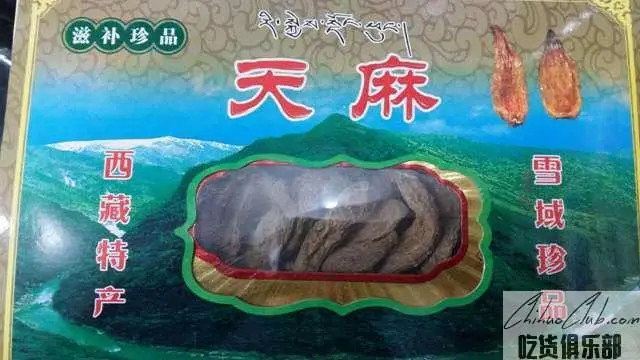
Lin Zhi rhizoma gastrodiae
-
Update date::
-
Date of protection::
-
Protected range:The scope of Linzhi Tianma is the administrative area of 6 counties in Nyingchi County, Lining County, Gongbujiangda County, Bomi County, Chayu County and Lang County of Linzhi Prefecture, Tibet Autonomous Region.
-
Related origin:xizang linzhishi milinxian gongbujiangdaxian bomixian chayuxian langxian jiangdaxian changdushi milinxian-danniangxiang milinxian-lilongxiang milinxian-milinzhen milinxian-nanyiluobaminzuxiang milinxian-paizhen milinxian-qiangnaxiang milinxian-wolongzhen milinxian-zaxiraodengxiang jiangdaxian-boluoxiang jiangdaxian-dedengxiang jiangdaxian-dengkexiang jiangdaxian-gangtuozhen jiangdaxian-jiangdazhen jiangdaxian-kagongxiang jiangdaxian-niangxixiang jiangdaxian-qingnidongxiang jiangdaxian-shengdaxiang jiangdaxian-tongpuxiang jiangdaxian-wangbudingxiang jiangdaxian-yanbixiang jiangdaxian-zigaxiang gongbujiangdaxian-bahezhen gongbujiangdaxian-cuogaoxiang gongbujiangdaxian-gongbujiangdazhen gongbujiangdaxian-jiangdaxiang gongbujiangdaxian-jiaxingxiang gongbujiangdaxian-jindazhen gongbujiangdaxian-niangpuxiang gongbujiangdaxian-zhongsaxiang gongbujiangdaxian-zhulaxiang bomixian-bagaixiang bomixian-duojixiang bomixian-guxiang bomixian-kangyuxiang bomixian-qingduozhen bomixian-songzongzhen bomixian-yigongxiang bomixian-yupuxiang bomixian-yuxuxiang bomixian-zamuzhen chayuxian-chawalongxiang chayuxian-gulaxiang chayuxian-guyuxiang chayuxian-shangchayuzhen chayuxian-xiachayuzhen chayuxian-zhuwagenzhen langxian-dengmuxiang langxian-donggazhen langxian-jindongxiang langxian-laduoxiang langxian-langzhen langxian-zhongdazhen
-
Category:
Linzhi Tianma is Wutianma, which is produced in the pollution-free environment at an altitude of 1800 meters to 3,500 meters in Linzhi City, Tibet. Because it grows in the special environment of high altitude, large temperature difference and strong sunlight, its active ingredients and biological activity are much higher than those produced in other regions. The gastrodin of Linzhi Tianma is more than 0.72%.
Linzhi Tianma can calm, relieve pain and resist convulsions, increase cerebral blood flow, lower blood pressure, slow heart rate, and protect against myocardial ischemia. Gastrodia elata polysaccharide is also immunologically active and is a raw material for excellent health care products. With the improvement of people's living standards and the enhancement of health awareness, Tianma is no longer confined to medicinal products. Various health products with Tianma as the main raw material emerge one after another. Tianma stewed chicken and Tianma stewed pigeons are used as winter tonic dishes. The dining table makes Linzhi Tianma a special product that is popular among tourists from Tibet. It is also the best gift for friends and relatives.
Linzhi Tianma quality technical requirements First, the variety Wu Tianma. Second, the site conditions are within the range of 1800m to 3500m above sea level, the soil type is forest brown loam, the soil texture is sand or sandy loam, the organic matter content is ≥4.0%, and the pH is 5 to 6.5. Third, planting management 1. Preparation of honey fungus, germination bacteria and fungi: According to the production routine of edible fungi and medicinal fungi, one to three strains of culture are carried out. The third-stage strains are directly used for production, which are divided into two periods: spring and autumn, and spring cultivation is before the end of January; autumn cultivation time is from July to the end of August. Take the broadleaf twigs (2.5cm to 10cm in diameter) and saw the wood segments growing 40cm to 60cm as the fungus. 2. Rice can be cultivated for a year before it can be used as a seed. 3. Planting: (1) Planting time: planted in winter from October to November, and planted in spring from March to early April. (2) Planting requirements: When the honey fungus on the fungus grows a number of fungi, it can be planted when the length is 10 cm. 4. Suitable environment: temperature range 10 ° C to 30 ° C, optimum temperature 20 ° C to 25 ° C, air humidity below 80%, soil water content 40% to 60%, pH 5 to 6.5. Environmental and safety requirements: The use of pesticides, fertilizers, etc. must comply with relevant national regulations and must not pollute the environment. 4. Harvesting and processing (1) Harvesting time: Gastrodia elata harvesting is divided into two periods: spring (March) and winter (November). (2) Processing requirements: Wash the collected gastrodia, steam and boil for about 3 minutes to 5 minutes, remove and dry until dry. V. Quality characteristics 1. Sensory features: oval, light purple surface, light-colored intermittent ring points prominent, short ring spacing, hard meat, brownish white section. 2. 3. Safety and other quality technical requirements: Product safety and other quality technical requirements must comply with relevant national regulations.
Apply to:
Producers within the scope of the Linzhi Tianma production area may apply to the Quality and Technical Supervision Bureau of the Nyingchi Prefecture of the Tibet Autonomous Region for the use of the “Special Mark for Geographical Indication Products”, which shall be reviewed by the Quality and Technical Supervision Bureau of the Tibet Autonomous Region and reported to the General Administration of Quality Supervision, Inspection and Quarantine for approval. The testing organization of Linzhi Tianma is selected by the Quality and Technical Supervision Bureau of the Tibet Autonomous Region in the testing institutions that meet the qualification requirements.